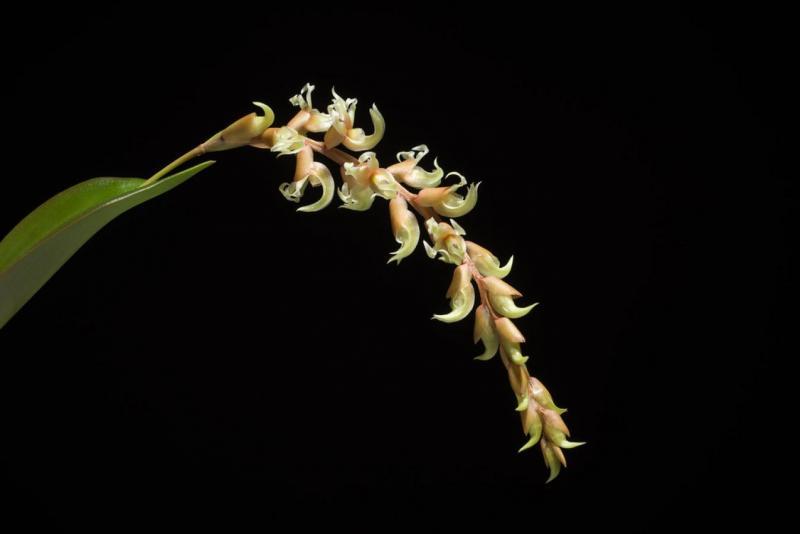Dendrochilum cootesii
Also known as: Coote's Dendrochilum or Dendrochilum cootesii h.f. album in the subfamily: Epidendroideae
General Information
Coote's Dendrochilum is a warm growing epiphytic orchid belonging to the sub family Epidendroideae. It is named after the Current Australian Orchid Enthusiast.
Plant Description
Grows to 15cm. Each new growth has a single leathery erect, lance shaped, oblong shaped leaf that grows to 2-10cm long. Pseudobulbs grow to 1-5cm
Substrate(s)
- Coarse
- Medium
- Bark
- Spaghnum Moss
Care Notes
This orchid goes into a dormancy phase during winter, during this phase it is best not to provide water unless the plant is starting to look thirsty. The lack of water increases the chance of flowering in spring, and also reduces the likelihood of any rot forming. Do not resume watering until new growth has appeared and is growing strongly.
Often a period of intense growth occurs after dormancy. During this time the amount of light, water and fertiliser the plant receives will directly impact the amount of growth that occurs during this time, and in the case of seedlings, will reduce the time required to reach maturity.
It's recommended to heavily reduce the water amount at the middle to end of autumn to trigger dormancy. Leaves on older bulbs will begin to drop during this time while the newer bulbs continue to mature until terminal leaves appear at the tip of the pseudobulbs.
Repotting can be done any time of the year though it's best to do it in early spring when new growth is appearing as this also means new roots will appear to help the plant anchor into the new media and offset any damage to established roots during the repotting process.
Climate
These orchids thrive in cool, conditions with good airflow. When cultivated they will thrive in a cool, sheltered environment such as a shaded greenhouse, or if grown in cooler climates they can be grown in the garden in areas where they are protected from frost and receive shade throughout the year, though they may be able to tolerate some morning sun during winter.
Grows at high elevations. Rainfall ranges from 23mm to 1161mm per day, heaviest in August and lightest in January. Humidity ranges from 83% to 93%, highest in July and lowest in January. Temperature ranges from 13C to 25C, highest in April (16C to 25C) and lowest in January (13C to 22C).Watering
These orchids are sensitive to excessive watering and should only be watered when they look thirsty. Water infrequently and ensure that the roots are dry before watering. Keep an eye on them especially during hot weather as overwatering can lead to rot, whereas underwatering may result in wilting or shriveling, which while unattractive, will not kill the plant.
Mist during hot weatherFertiliser
dormant-medium-demand-orchid Use balanced fertiliser during Spring and Summer. Apply fertiliser regularly at half strength year round. Use a high Nitrogen fertiliser during Spring and Summer. Use a high Phosphorous fertiliser during Summer.
Potting
These plants are quite forgiving and will do well repotted ever 2-3 years. The mix should be coarse, well draining, and allow space for air to move and for roots to grow.
Alternatively, these plants will also do well mounted to tree fern or cork slabs, or mounted to trees.
Best time for repotting or mounting the orchids is the end of winter when new growths start to appear. Avoid repotting during hot weather,
This plant does very well in baskets or suspended pots This plant does well mounted. Repotting is best done annually.






















